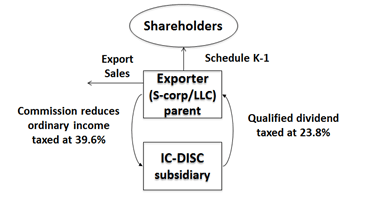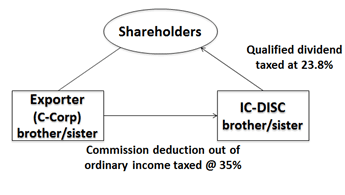What is an IC-DISC?
An Interest Charge Domestic International Sales Corporation, or IC-DISC, offers a significant federal income tax savings for making or distributing U.S. products for export. It is not a tax shelter but creates permanent tax savings by transferring income from the exporter to the tax-exempt IC-DISC through an export sales commission. It’s an incentive specifically provided by the tax code that allows U.S. exporters to increase their ability to compete globally by reducing U.S. tax liabilities.
Key Takeaways
- Tax Efficiency: IC-DISC provides significant tax savings for U.S. exporters by transferring income to a tax-exempt entity, reducing overall U.S. tax liabilities.
- Commission Calculations: Commissions are based on export sales, calculated as either 50% of net income or 4% of gross receipts, offering a permanent tax rate advantage.
- Tax Benefits: Profits distributed as dividends are taxed at lower capital gains rates rather than ordinary income rates, decreasing tax costs for shareholders.
- Operational Impact: The operations of the exporting company remain unchanged by the existence of an IC-DISC, which is disclosed only to necessary tax authorities and advisors.
- Regulatory Stability: The Tax Cuts and Jobs Act did not alter IC-DISC regulations, maintaining its benefits despite broader tax law changes.
- Implementation Requirements: Proper setup includes timely election, compliance with stock and bookkeeping rules, and considering a domicile state without income tax for additional savings.


